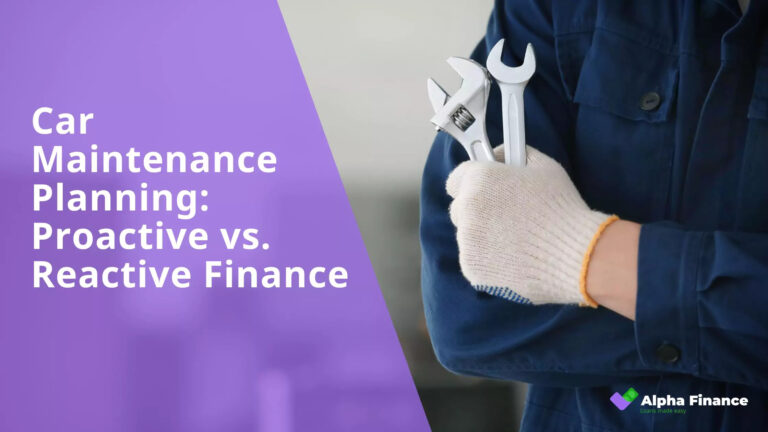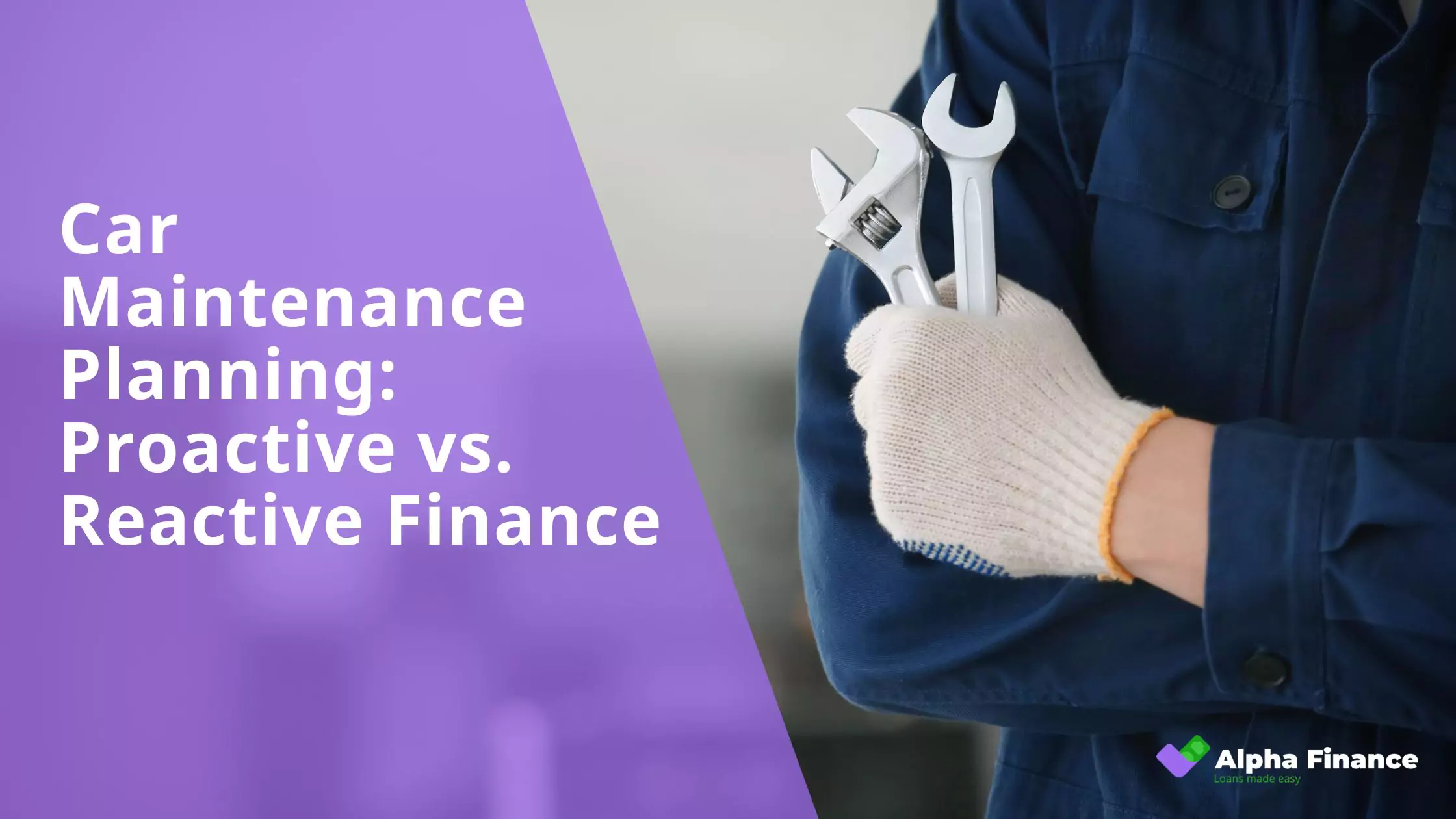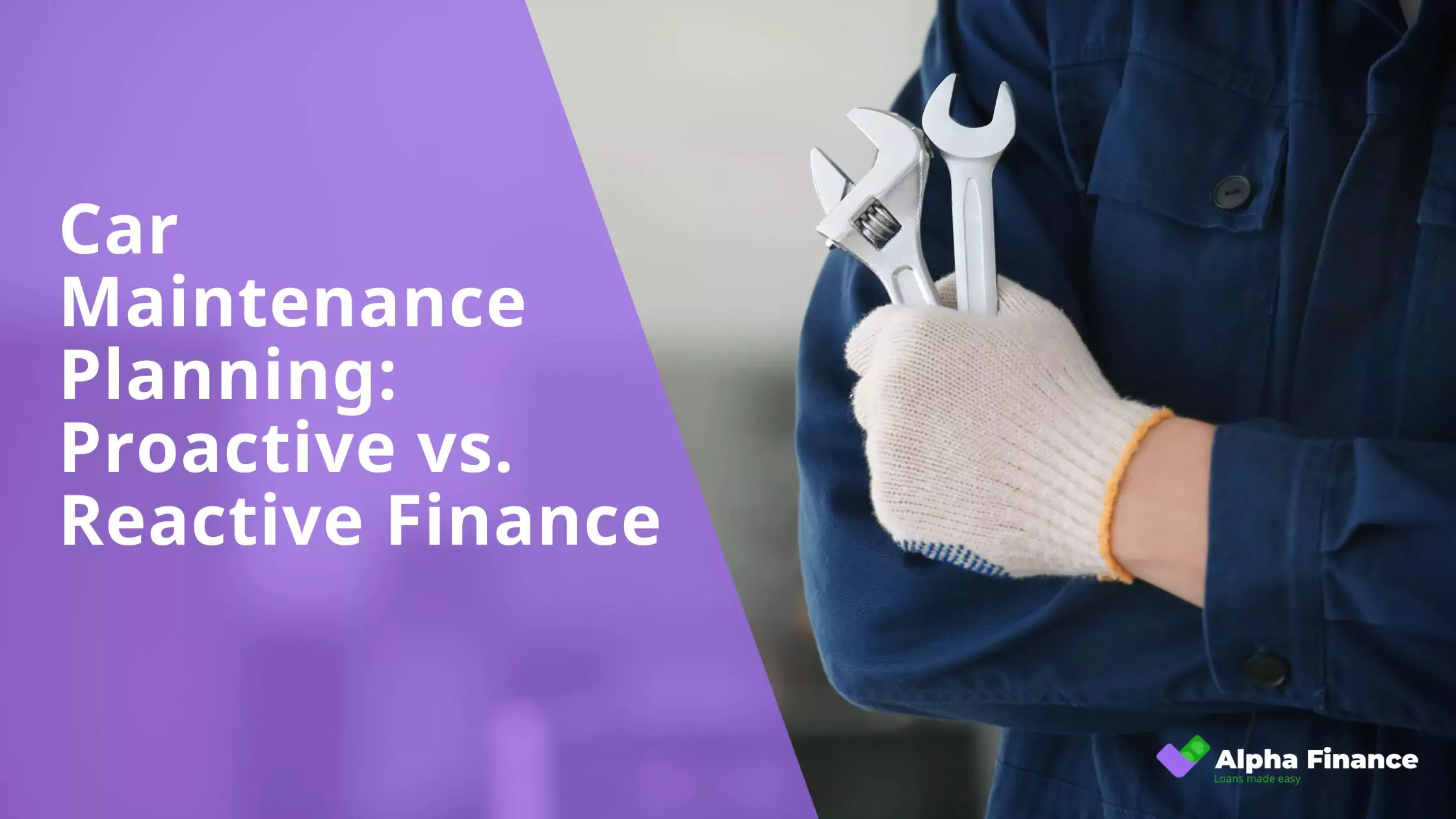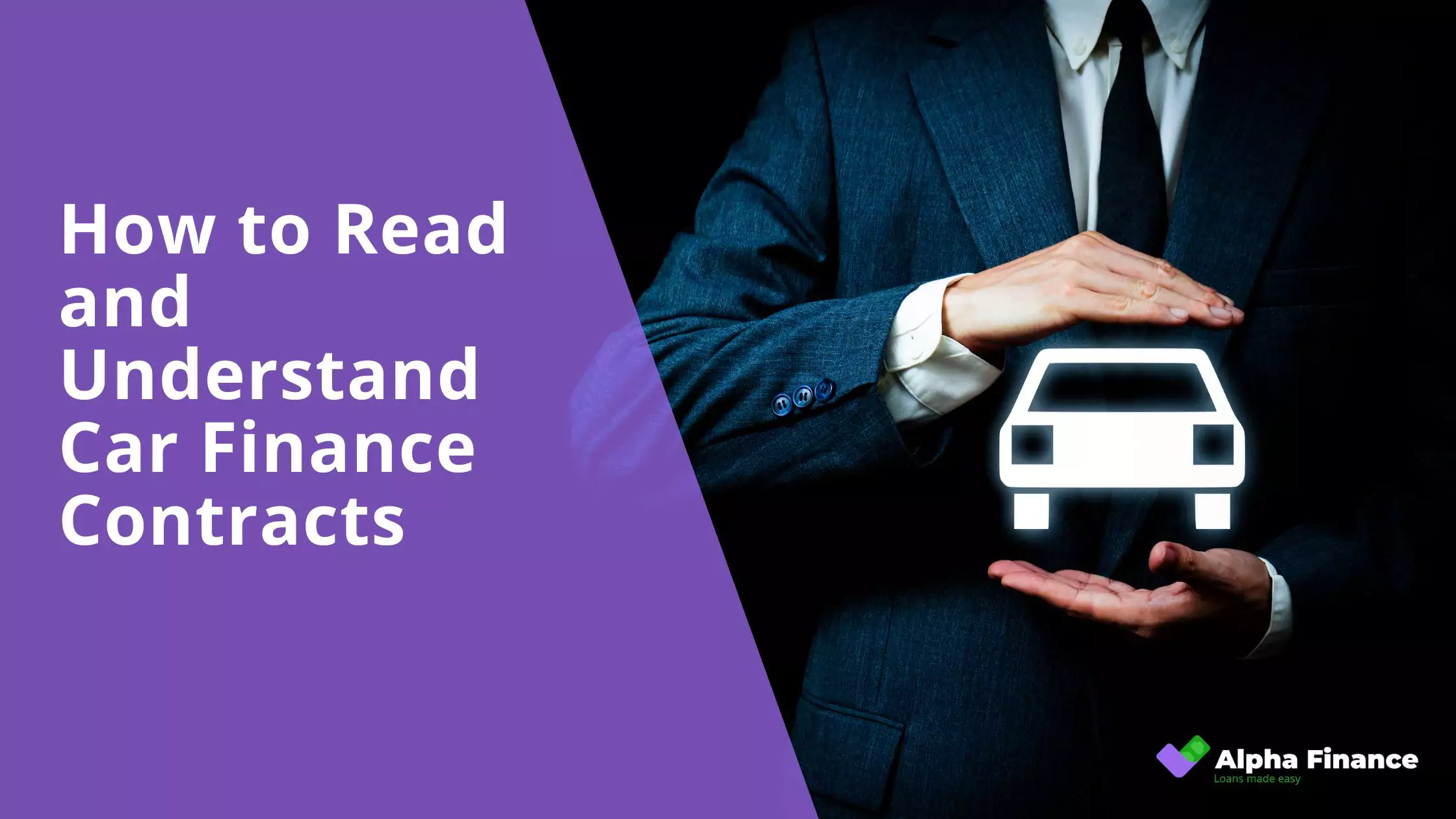Owning a car offers unparalleled freedom and convenience, whether it’s for the daily commute, school runs, or weekend getaways across Australia. However, this seemingly essential part of modern life also comes with a significant financial commitment and a range of potential pitfalls that can quickly turn a dream into a burden.
Many Australian car owners, often focused solely on the initial purchase price and monthly car financing solutions, underestimate the true, ongoing costs and inherent financial risks involved. From hidden fees and unexpected maintenance to rapid depreciation and insurance complexities, the financial landscape of car ownership is far more intricate than it first appears. This guide argues that informed decision-making, coupled with proactive strategies, is key to mitigating these financial risks. By understanding what you’re up against and planning accordingly, car ownership can remain a benefit, not a source of stress. You’ll learn about the key financial risks associated with owning a vehicle in Australia and discover practical, actionable strategies to minimise their impact on your wallet and your peace of mind.
The Foundation: Essential Protections
Before even hitting the road, savvy Australian car owners understand that establishing fundamental financial protections is paramount. These safeguards act as the first line of defence against potentially crippling costs.
Understanding Car Insurance: Protecting Your Financial Assets
-
The Absolute Necessity of Car Insurance:
- In Australia, Compulsory Third Party (CTP) insurance (also known as Green Slip in NSW) is legally mandatory and covers compensation for people injured or killed in an accident. Without it, you cannot register your vehicle.
- Beyond CTP, additional insurance is vital, as accidents, theft, or damage can incur costs far beyond what most individuals can afford out-of-pocket.
- It’s not just about protecting your own vehicle, but also safeguarding you from liability for damage to other people’s property or vehicles.
-
Different Types of Coverage and What They Protect:
- Third Party Property, Fire & Theft: Covers damage to other people’s property, plus fire and theft for your own vehicle. It does not cover damage to your car if you are at fault in an accident.
- Comprehensive Car Insurance: This is the most extensive coverage. It protects your car from damage (even if you are at fault), theft, fire, malicious damage, and typically covers damage you cause to other people’s property. It’s highly recommended for most car owners.
- Third Party Property Only: The most basic level of non-CTP insurance, covering only damage to other people’s property caused by your vehicle. It offers no protection for your own car.
-
How Adequate Insurance Acts as Your Primary Financial Shield:
- Risk Transfer: Insurance fundamentally transfers the financial risk of large, unpredictable events (like accidents or theft) from your personal finances to the insurer.
- Avoiding Catastrophic Debt: Without comprehensive insurance, a major accident could leave you facing tens or hundreds of thousands of dollars in repair bills for your car and other vehicles/property, potentially leading to significant debt or even bankruptcy.
- Peace of Mind: Knowing you’re adequately covered provides invaluable peace of mind, allowing you to drive with confidence, knowing financial protection is in place.
Gap Insurance: Protecting Yourself from Financial Loss
-
Explaining the “Gap” Between What You Owe and What Your Car is Worth:
- Rapid Depreciation: Cars depreciate rapidly, especially new ones. From the moment you drive a new car off the lot, its market value drops significantly.
- The “Gap”: If your car is written off (total loss) or stolen, your comprehensive insurance payout is typically based on the car’s current market value at the time of the incident, not what you originally paid or, crucially, what you still owe on your car loan. Gap insurance covers the financial difference, or “gap,” between your comprehensive insurance payout and the outstanding balance of your car loan.
-
When Gap Insurance is Particularly Important:
- New Cars with High Depreciation: Particularly relevant for new vehicles that experience significant depreciation in their first few years.
- Low or No Deposit Loans: If you financed your car with a very small deposit or no deposit, you are more likely to be in a negative equity position (owing more than the car is worth) early in the loan term.
- Long Loan Terms: Longer loan terms (e.g., 5-7 years) mean it takes longer for your principal balance to reduce, increasing the period you might be in negative equity.
-
Preventing a Significant Financial Setback in Total Loss Scenarios:
- Avoiding “Debt for No Car”: Without gap insurance, a total loss scenario could leave you making loan repayments on a car you no longer possess. Gap insurance prevents this substantial financial setback, allowing you to settle your loan without out-of-pocket costs after an unfortunate incident.
Guarding Against Future Costs
Beyond immediate protections, savvy car ownership demands proactive strategies to guard against the inevitable future costs that arise during your vehicle’s lifespan.
Extended Warranties: Are They Worth the Financial Investment?
-
Defining Extended Warranties and What They Typically Cover:
- Beyond Manufacturer: An extended warranty is a service contract that provides coverage for mechanical breakdowns and certain repairs beyond the original manufacturer’s warranty period.
- Coverage Variation: What they cover varies significantly. Some are bumper-to-bumper, while others only cover specific major components (engine, transmission). They typically exclude wear-and-tear items like tyres, brakes, and routine servicing.
-
Pros and Cons from a Financial Perspective:
- Pros:
- Peace of Mind: Can offer psychological comfort against large, unexpected repair bills.
- Budget Predictability: If a major covered component fails, the cost is covered, avoiding a lump sum expense.
- Cons:
- High Upfront Cost: Often expensive, adding a significant percentage to the car’s price.
- Overlap with ACL: Many coverages already provided by Australia’s strong Consumer Guarantees (ACL) for a “reasonable” period, meaning you might be paying for rights you already have.
- Exclusions & Fine Print: Strict terms, numerous exclusions (e.g., specific components, maintenance requirements), and potential deductibles can limit their actual value.
- Low Utilisation Rate: Many consumers never make a claim, or claims are for minor issues cheaper to fix out-of-pocket.
- Pros:
-
Factors to Consider When Deciding if an Extended Warranty is Right for You:
- Product Reliability: Research the car’s known reliability. Is it prone to issues after the manufacturer’s warranty?
- Cost vs. Potential Repairs: Compare the warranty cost to estimated major out-of-warranty repair costs.
- Your Risk Tolerance: Can you comfortably afford a large unexpected repair bill?
- ACL Rights: Understand what you’re already covered for under Australian Consumer Law. Does the warranty truly offer additional, valuable protection?
- Read the PDS: Always read the Product Disclosure Statement thoroughly to understand what’s covered, excluded, and any conditions.
How to Prepare for Unexpected Car Repairs, Within Your Financial Plan
-
The Inevitability of Car Repairs:
- Universal Truth: All cars, new or old, will eventually need repairs. Wear and tear, age, mileage, and even driving habits contribute to eventual breakdowns.
- Proactive vs. Reactive: Planning for these costs means moving from a reactive “fix it when it breaks” approach (which is often more expensive) to a proactive “prevention is better than cure” strategy.
-
Strategies for Budgeting and Saving for Unforeseen Mechanical Issues:
- Dedicated Budget Line Item: Create a specific category in your monthly budget for “Car Maintenance & Repairs.”
- Estimate & Allocate: Research average service costs for your make/model and factor in common repair costs. Divide these annual costs by 12 and save that amount monthly, even for annual services.
- Address Minor Issues Promptly: Don’t ignore warning lights or strange noises. Addressing small problems early prevents them from escalating into major, costly failures.
- Regular Servicing: Adhere strictly to the manufacturer’s recommended service schedule. This identifies potential problems early and often prevents larger ones.
-
Emergency Funds and Dedicated Car Repair Savings:
- Separate Funds: Maintain a general emergency fund for major life events (job loss, medical emergencies).
- Dedicated Car Repair Fund: Create a separate, dedicated savings account specifically for car maintenance and repairs.
- How Much to Save: Aim for at least $1,000 – $3,000 as a starting point, adjusted based on your car’s age, make, and mileage.
- Automate Savings: Set up automatic transfers to this fund regularly to build it consistently.
Smart Borrowing and Proactive Planning
Savvy Australian car ownership extends beyond initial purchase and insurance; it critically involves smart borrowing choices and ongoing financial foresight.
The Financial Risks of High-Interest Car Loans
-
How High Interest Rates Impact Total Cost of Ownership:
- Inflated Price: High interest rates dramatically inflate the overall amount you pay for your car. A seemingly small difference in the percentage rate can translate into thousands, even tens of thousands, of dollars extra paid over the life of the loan. This means you’re paying a significantly higher price for the same vehicle.
- Slow Principal Reduction: With high interest, a larger portion of your early repayments goes directly to covering interest charges rather than reducing the principal loan amount. This slows down your equity build-up in the vehicle.
-
The Dangers of Getting Trapped in a Cycle of Debt:
- Increased Repayment Burden: High interest leads to higher monthly or fortnightly repayments, straining your budget and reducing your disposable income.
- Negative Equity Risk: Slower principal reduction, coupled with rapid vehicle depreciation, can quickly lead to negative equity (owing more than the car is worth). If the car is written off or stolen, your insurance payout won’t cover the loan, leaving you in debt for a car you no longer own.
- Default and Repossession: A stretched budget increases the risk of missing repayments, leading to late fees, damage to your credit score, and ultimately, the car being repossessed. This leaves a severe mark on your financial history and you may still owe money after the sale of the repossessed vehicle.
-
Tips for Securing Favourable Loan Terms:
- Know Your Credit Score: Obtain a free copy of your credit report from services like Equifax, Experian, or Illion in Australia. A good credit score is crucial for securing lower interest rates.
- Shop Around Aggressively: Don’t accept the first offer, especially from a dealership. Get pre-approvals from multiple banks, credit unions, and reputable online lenders to compare Annual Percentage Rates (APR), which include all fees.
- Understand the Total Cost: Focus on the “total amount repayable” over the loan term, not just the monthly payment. Factor in all fees (establishment, ongoing, early exit).
- Consider Shorter Loan Terms: While longer terms mean lower monthly payments, they significantly increase the total interest paid. Choose the shortest term you can comfortably afford.
How to Read and Understand Car Finance Contracts, to Avoid Financial Pitfalls
-
Key Terms and Clauses to Look Out For:
- Amount Financed vs. Total Amount Repayable: Clearly distinguish between the principal amount borrowed and the total you will pay back (including interest and fees).
- Annual Percentage Rate (APR) and Comparison Rate: These are the true cost of the loan, including most fees. Use the Comparison Rate required by Australian law to compare offers.
- Fixed vs. Variable Interest: Understand if your rate can change (variable) or if it’s set for the loan term (fixed).
- Loan Term and Repayment Frequency: Know exactly how long you’ll be paying and how often.
-
Identifying Hidden Fees and Unfavourable Conditions:
- Establishment/Application Fees: Are there upfront costs?
- Monthly Service/Admin Fees: Are there ongoing charges?
- Late Payment Fees: What are the penalties for missing a payment?
- Early Repayment/Exit Fees: Crucially, can you pay off the loan early without penalty? Many loans have these “gotcha” fees.
- Unnecessary Add-ons: Watch out for extended warranties, loan protection insurance, or roadside assistance added to the loan by dealers, often at inflated prices and with high commissions. These inflate your loan and the interest you pay.
-
The Importance of Due Diligence Before Signing:
- Don’t Be Rushed: Request to take the contract home to read it thoroughly in a quiet environment. Never sign under pressure at the dealership.
- Read Every Clause: Do not skim. Use a highlighter for key terms and question anything unclear.
- Get Answers in Writing: If you ask questions and receive verbal assurances, try to get them confirmed in writing (e.g., email).
- Seek Independent Advice: For large loans or if you’re unsure, consider showing the contract to a financial advisor or a financial counsellor (free services available in Australia).
Financial Planning for Car Maintenance: Proactive vs. Reactive Strategies
-
The Cost-Saving Benefits of Regular, Preventative Maintenance:
- Reduced Overall Costs: Proactive maintenance (e.g., regular servicing, fluid checks, filter changes) prevents small issues from escalating into major, catastrophic failures. The cost of prevention is almost always significantly lower than the cost of emergency repairs.
- Improved Fuel Efficiency: A well-maintained car with clean filters, optimal fluid levels, and correctly inflated tyres runs more efficiently, saving you money on petrol.
- Extended Vehicle Lifespan: Regular care helps your car last longer, delaying the need for a costly new vehicle purchase.
- Higher Resale Value: A well-documented service history significantly boosts your car’s resale value.
-
Creating a Realistic Budget for Ongoing Car Care:
- Dedicated Budget Line: Establish a specific budget line item for “Car Maintenance & Repairs” separate from your general emergency fund.
- Allocate Monthly Funds: Even if services are annual, divide the expected cost by 12 and save that amount monthly. Factor in costs for tyres, registration, and comprehensive insurance alongside servicing.
- Research Specific Needs: Understand your car’s manufacturer-recommended service schedule and be aware of common issues for your specific make/model to anticipate future costs.
-
Avoiding Larger, More Expensive Repairs Through Proactive Planning:
- Early Detection: Regular servicing and basic DIY checks (like checking fluid levels and tyre pressure) help identify minor issues before they become major problems.
- Prompt Action: Don’t ignore warning lights, strange noises, or unusual smells. Addressing these promptly can prevent cascading damage to other components.
- Dedicated Repair Fund: Build a dedicated savings account specifically for unexpected car repairs, aiming for at least $1,000 – $3,000 as a buffer. Automate transfers to build this fund consistently.
Conclusion: Driving Financially Smarter
Owning a car in Australia is a significant financial undertaking, but it doesn’t have to be a source of stress or unexpected debt. By actively engaging in smart financial planning and understanding the potential pitfalls, you can effectively mitigate the risks associated with vehicle ownership. From securing the right insurance and understanding your car finance contract, to adopting proactive maintenance strategies and avoiding high-interest loans, informed decision-making is paramount throughout your entire car ownership journey. Taking control of your car’s finances not only leads to a more secure and predictable driving experience but also contributes positively to your overall financial well-being.
Get Pre-Approved for Car Finance
Ready to find your next set of wheels? Getting pre-approved for car finance is a smart first step, giving you clarity on your borrowing power and enabling you to shop with confidence. This proactive approach not only simplifies the buying process but can also help you secure a more competitive interest rate. Knowing your finance is sorted before you visit the dealership puts you in a strong negotiating position. Get pre-approved for your car finance with Alpha Finance Australia today and take control of your car buying journey.




